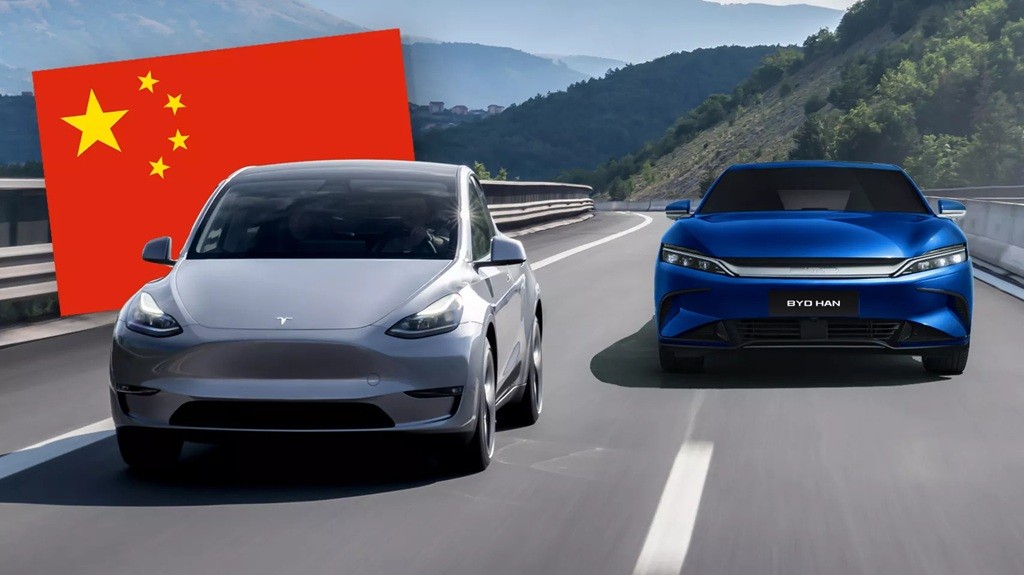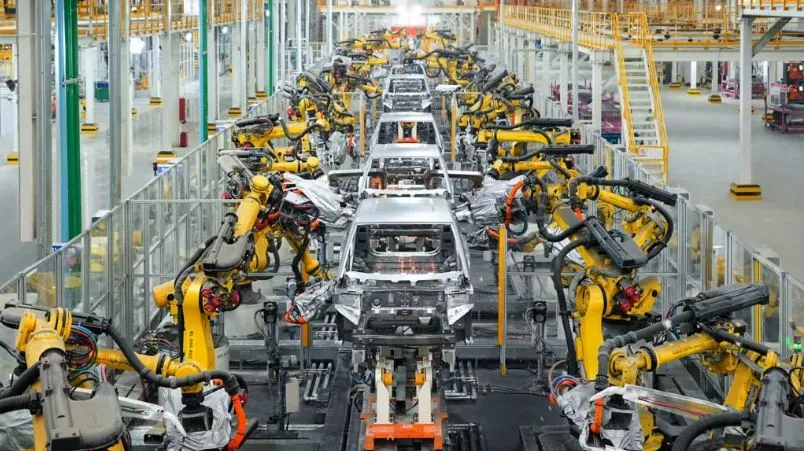In 2024, a seismic shift rocked the global electric vehicle (EV) industry: China’s BYD (Build Your Dreams) officially dethroned Tesla. Once the undisputed EV king, Tesla is now playing catch-up as BYD outpaced it in both production and revenue. The Chinese automaker’s meteoric rise is not just a success story — it’s a strategic masterclass in how to win the EV war.

BYD Breaks Records, Tesla Feels the Heat
BYD’s revenue in 2024 soared to an astonishing $107 billion USD, far surpassing analyst expectations and Tesla’s $97.7 billion. Its net profit margin surged to 40.3%, signaling not only a financial win but a growing consumer trust in BYD’s hybrid and fully electric models. Meanwhile, Tesla’s market appeal started to fade, with stock prices dropping by 26.6% and branding influence weakening globally.
The fourth quarter of 2024 marked a symbolic and statistical shift: BYD produced 1.779 million EVs, eclipsing Tesla’s 1.774 million. Though the margin was just 5,000 vehicles, it signaled a pivotal moment. For the first time, the challenger had become the leader.
The Secrets Behind BYD’s Success

1. Affordable Innovation
One of BYD’s strongest plays has been its ability to offer technologically advanced EVs at significantly lower prices. While Tesla’s Model Y sells for around ¥231,000 (approx. $32,600), BYD offers a wide range of models with better affordability, especially in China — a price-sensitive market.
In October 2024 alone, BYD sold over 500,000 passenger vehicles, nearly 60% of which were plug-in hybrids. Unlike Tesla, which only offers fully electric cars, BYD’s hybrid lineup has proven extremely popular, especially in emerging markets.
2. Technological Superiority Without the Premium Price Tag
BYD has rapidly integrated cutting-edge tech across its models — including autonomous driving features and a proprietary driver-assist system called God’s Eye. And unlike Tesla, BYD includes these features without additional subscription fees. Their fifth-generation DM-i hybrid system and ultra-fast battery charging (470 km range in just 5 minutes) are redefining what customers expect from an EV.
3. Mastering the Supply Chain
Another critical factor? BYD controls almost every aspect of its supply chain. From batteries to chips, it manufactures in-house, reducing reliance on external suppliers. This vertical integration allows BYD to maintain quality, reduce costs, and quickly respond to market demands. In contrast, Tesla has struggled with production bottlenecks and logistics disruptions.
Tesla’s Response: Late But Strategic
Tesla hasn’t taken the blow lightly. Elon Musk’s team is preparing to launch a lower-cost model — 20% cheaper than the current Model Y — by 2026. The car will be produced in Shanghai, emphasizing that China remains Tesla’s most critical battleground. Additionally, Tesla is working with Baidu to localize its navigation and autonomous driving software, an essential move to stay competitive in the Chinese market.
Yet, the challenges mount: Tesla’s stock has fallen 32% since the beginning of 2024. The company faces major recalls, political headwinds in the U.S., and tightening EV subsidies.
Global Expansion: BYD Goes on the Offensive
BYD isn’t just targeting China. It’s going global — aggressively. With factories sprouting up in Hungary, Mexico, Brazil, and even Turkey, BYD is sidestepping tariffs and cementing its presence in Europe and Latin America. The goal? Within a few years, half of its vehicle sales should come from international markets.
In 2024, BYD’s international revenue hit $13.7 billion USD. A new factory in Germany — the heartland of legacy automakers like Volkswagen, Mercedes-Benz, and BMW — is also in the works. If this project materializes, BYD will challenge European giants on their home turf.

Valuation Gap Still Exists
While BYD is winning on units and momentum, Tesla still holds the crown in market capitalization — sitting at around $800 billion, compared to BYD’s $157 billion. Tesla’s net profits are also higher in absolute terms, with $7.6 billion in 2024. However, BYD’s rapid growth suggests the gap could close faster than expected.
Three Strategic Lessons from BYD
-
Own Your Supply Chain
BYD’s self-reliance on key components allows it to adapt quickly, maintain production stability, and control pricing — a foundational strength many rivals lack. -
Rebranding “Made in China”
BYD is changing global perceptions of Chinese vehicles. No longer seen as cheap and unreliable, their cars now rival Western brands in design, performance, and tech — without relying heavily on advertising. -
Strategic Pricing Before Premium Positioning
Rather than chasing high margins upfront, BYD prioritized scale and influence. It captured middle-class consumers in large, dynamic markets — building loyalty and habits before moving upscale.
2025 Outlook: The Race Is Far From Over

In 2025, BYD has set a bold target: producing 6 million vehicles. If achieved, it would surpass General Motors and Stellantis, making it the world’s fourth-largest automaker behind Toyota, Volkswagen, and Hyundai-Kia.
As BYD continues to expand, innovate, and penetrate more global markets, it no longer plays the role of an underdog — but a dominant force reshaping the automotive future.





